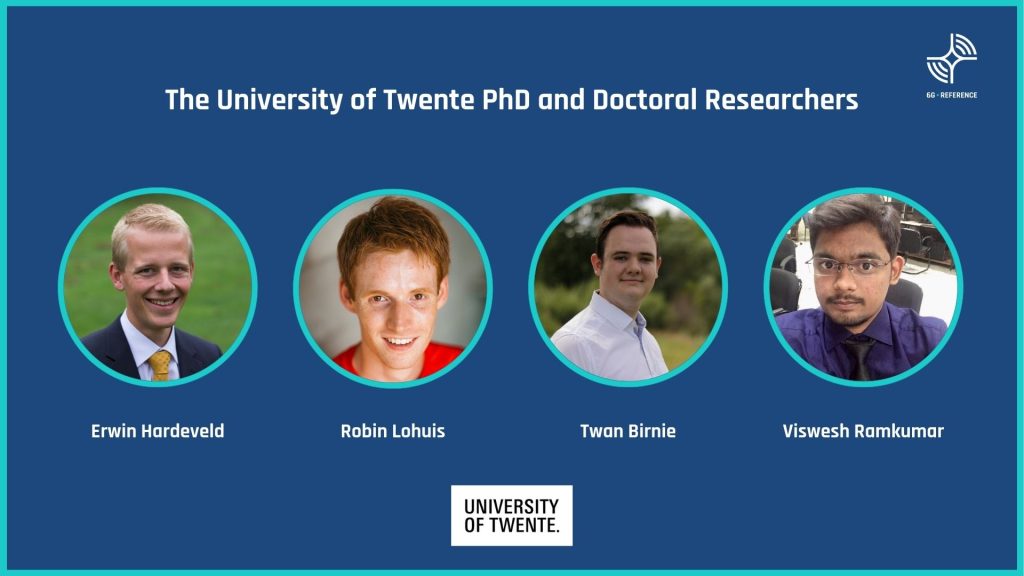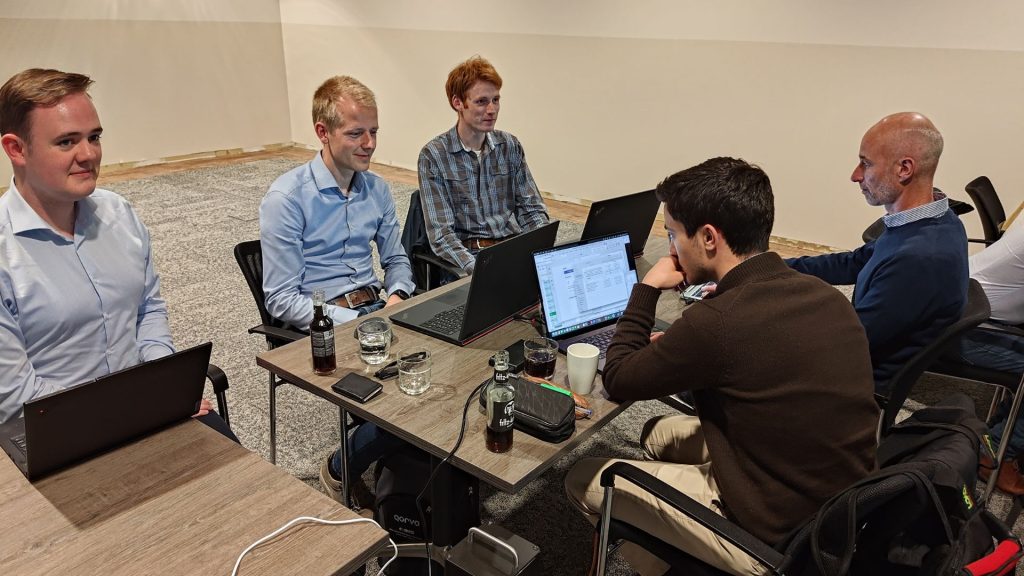As the world moves steadily towards a hyper-connected future, innovation at the hardware level is critical. At the forefront of this transformation are a group of PhD and Doctoral researchers from the Integrated Circuit (IC) Design Group at the University of Twente (The Netherlands), one of the 6G-REFERENCE partners.
Contributing with their cutting-edge work to the project, their mission is to push technological boundaries, help design the next-generation Radio Frequency (RF) and analogue systems, and advance what 6G will look like in practice.
We spoke with Robin Lohuis, Erwin Hardeveld, Twan Birnie, and Viswesh Ramkumar about their roles and research within 6G-REFERENCE, how being part of our project is shaping their academic paths, and the impact of the 6G-REFERENCE innovations on our society.
Driving Innovation at the Circuit Level
Each of these researchers plays a vital role in the hardware design stack of the 6G ecosystem:
- Twan Birnie is working on a highly linear RF front end, enabling cleaner signal reception and improved spectral efficiency.
- Erwin Hardeveld focuses on achieving frequency and time synchronisation within radio units, crucial for coherent and efficient communication.
- Robin Lohuis is developing a frequency synthesizer, a fundamental component in wireless communication systems.
- Viswesh Ramkumar specializes in FIR channel selection filters, complementing the work by Twan, and refining system performance.
Together, they are creating the building blocks that will enable more reliable, high-performance, and flexible 6G communication systems.

Navigating Technological Limits
The IC Design Group at the University of Twente centres on solving one of the key challenges in the evolution to 6G: overcoming the physical and practical limitations of current wireless technologies.
“With today’s technologies, we’ve already reached some limits,” explains Twan Birnie. “To achieve the higher data rates that society is demanding, we need to find new methods.”
Viswesh Ramkumar elaborates on the complexity of this challenge:
“It’s about understanding trade-offs. If you know the trade-offs, you know which design decisions work best for different environments. With the technologies explored in 6G-REFERENCE, we can find solutions that redefine what’s possible.”
A Broader Perspective Through Collaboration
One of the greatest benefits of participating in 6G-REFERENCE is the exposure to a wide European network of academic and industry partners. For these PhD and Doctoral students, it’s a unique opportunity to see beyond their own research and understand its place in the full ecosystem, going from academia to industry.
“In academia, we often focus on what’s theoretically possible,” says Robin Lohuis, “but through 6G-REFERENCE, we also learn how things work in practice, what the industry actually needs.” This interaction is not one-sided: “Our innovations in academia are not just abstract ideas, because they’re directly relevant to industry and can be brought into real-world applications”, notes Erwin Hardeveld.
Viswesh Ramkumar adds that getting a full-system perspective helps them set better design specifications. In his words: “If you don’t see a bigger picture, it’s really hard to set the specs and do a meaningful job.”
Real-World Impact: Laying the Groundwork for 6G
Ultimately, the innovations being developed by the IC Design Group will shape the backbone of 6G hardware, a technology that will power everything from smart cities to autonomous mobility and immersive communication, in the case of 6G-REFERENCE, with the focus on highly populated urban environments.
“We are creating a new baseline for 6G hardware capabilities,” says Twan Birnie, “enabling more reliable and advanced networks that weren’t feasible before.” Viswesh Ramkumar underscores the societal importance of this work:
“6G-REFERENCE is all about pushing boundaries so that society can enjoy faster, more connected, and better-performing services.”
And as Robin Lohuis puts it:
“We’re designing and building circuit blocks today that can become part of tomorrow’s 6G standards, improving speed and reliability for the next generation of wireless systems.”

The work of these young researchers at the University of Twente exemplifies the value of collaborative innovation in large-scale research projects like 6G-REFERENCE. Their designs and insights are not only expanding the limits of RF and analogue hardware, but also ensuring that the 6G future will be technically sound, efficient, and ready to meet the demands of tomorrow’s society.

